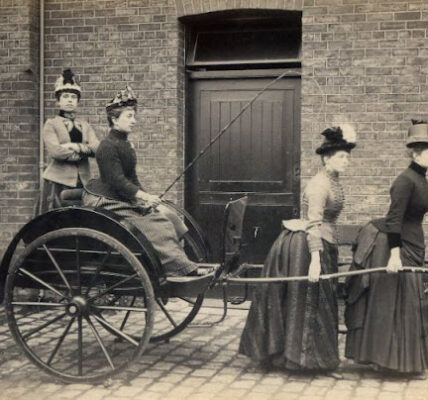Words are more than just letters strung together—they can hold hidden meanings, patterns, and features that make us think in unexpected ways. In today’s challenge, we have a set of seemingly unrelated words, but they share a special commonality. Ready to dive in and discover what makes these words unique?
Let’s break down the puzzle, avoid common pitfalls, and uncover the secret step-by-step.

Why This Word Puzzle Can Be Trickier Than It Seems
At first glance, this puzzle may seem like a simple vocabulary exercise, but it’s far more than that. The key to solving it doesn’t lie in word meanings, syllables, or sounds—it’s all about structure. Many solvers initially try to find connections based on the definitions, origins, or length of the words, only to realize that they’re looking in the wrong direction.
The challenge lies in noticing small details within each word. It’s easy to get caught up in complex theories or phonetic patterns, but this puzzle is all about simplicity. Let’s explore some common mistakes that can steer solvers off course.
Common Mistakes When Solving This Puzzle
Before we dive into the solution, let’s look at the most frequent mistakes people make:
- Focusing on Word Meanings: It’s natural to start by grouping the words based on their definitions. However, the answer has nothing to do with semantics.
- Looking for Phonetic Patterns: Many solvers try to find similarities in pronunciation, such as rhymes or sounds, but this isn’t the solution.
- Overcomplicating the Analysis: Some people dive deep into linguistic rules or word origins, hoping to uncover a hidden connection. However, the pattern here is much simpler.
- Ignoring Letter Positions: The most critical clue is the position of specific letters within each word, which often gets overlooked.
Now that we know what not to do, let’s break down the solution step-by-step.
Step-by-Step Guide to Solving the Word Puzzle
Step 1: Analyze Each Word Individually
The words provided in this puzzle are as follows:
- Banana
- Uneven
- Grammar
- Voodoo
- Assess
- Potato
- Revive
- Dresser
The goal is to find a common feature among these words. Instead of focusing on their meanings, pay attention to the arrangement of letters within each word.
Let’s examine each word closely, focusing specifically on the second letter and the last letter:
- Banana: Second letter is ‘a’; last letter is also ‘a’.
- Uneven: Second letter is ‘n’; last letter is also ‘n’.
- Grammar: Second letter is ‘r’; last letter is also ‘r’.
- Voodoo: Second letter is ‘o’; last letter is also ‘o’.
- Assess: Second letter is ‘s’; last letter is also ‘s’.
- Potato: Second letter is ‘o’; last letter is also ‘o’.
- Revive: Second letter is ‘e’; last letter is also ‘e’.
- Dresser: Second letter is ‘r’; last letter is also ‘r’.
Step 2: Identify the Common Feature
The pattern is clear: in each of these words, the second letter is the same as the last letter. This hidden characteristic is purely structural, and it’s not related to word meanings, sounds, or syllables. It’s a simple yet clever form of wordplay that relies solely on letter positions.
Why This Word Puzzle Is a Great Brain Teaser

This puzzle is an excellent test of observation skills and lateral thinking. It encourages solvers to look beyond surface meanings and pay closer attention to letter arrangement. It’s not about knowing complex vocabulary but about spotting a structural pattern that’s hiding in plain sight.
Solving puzzles like this helps you hone your pattern recognition skills, which is useful in various problem-solving scenarios. It’s a reminder that sometimes the answer lies in the simplest detail—right under our noses.
How to Improve Your Puzzle-Solving Skills
If you struggled with this puzzle, don’t worry! Here are some tips to improve your skills for future challenges:
- Look for Patterns in Unusual Places: Sometimes, the solution isn’t related to the meaning of the words but to the arrangement of their letters.
- Stay Open-Minded: Avoid making assumptions too quickly. Try different approaches, even if they seem unconventional.
- Recheck Each Word: Once you think you’ve found a pattern, go back and reexamine each word to ensure it fits the solution.
- Practice with Similar Puzzles: The more you practice this type of word puzzle, the better you’ll become at spotting hidden patterns.
Challenge Your Friends and See Who Can Solve It Faster
Did you manage to solve this word puzzle on your own? If so, congrats! If not, don’t be discouraged—it’s designed to be tricky. Share this challenge with friends and family to see if they can uncover the pattern. It’s always fun to compare different strategies and discover who can crack the code first.
Conclusion: Unlocking the Secrets of Word Patterns
This word puzzle is a prime example of how everyday words can hide unexpected surprises. By focusing on the structure rather than the meaning, you were able to uncover a hidden pattern that connects these seemingly unrelated words.
Puzzles like this are not only fun—they also help sharpen your critical thinking and observation skills. So, the next time you encounter a brain teaser, remember to pay attention to the smallest details—they might just hold the key to the solution.
Keep challenging yourself with more puzzles and word games, and you’ll soon master the art of finding hidden patterns in no time!



